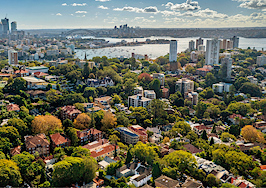Join industry visionaries Pete Flint, Spencer Rascoff, Ryan Serhant and more at Inman Connect New York, Jan. 24-26. Punch your ticket to the future by joining the smartest people in real estate at this must-attend event. Register here.
The price of a one- and two-bedroom apartment reached all-time highs this month, according to a new report, but there are signs that an ongoing trend toward normalization of rent prices is continuing.
After nearly two straight years of rent growth that was well above historical levels, rent grew at 3.9 percent nationally from August to September, according to the rent data and portal company Zumper.
That’s just about in line with historical levels of around 3-4 percent rent growth. Rent remained flat in some markets, and in half of cities listed in the report, rent actually declined.
“The rental market has been very supply constrained for the past five quarters, but there has been a significant shift back towards equilibrium in the past quarter,” Anthemos Georgiades, Zumper’s CEO, said in the report. “Occupancy rates and the pace of rent increases are now falling in many major metros, as renter demand softens and fear of recession kicks in, with many renters deciding to stay put or trade down on the most expensive options.”
That mirrors findings by other rental economists who expect prices to cool through the rest of the year as the nation braces for a potential recession in 2023.
On Tuesday, Jay Parsons, vice president and head of economists and industry principals at RealPage, noted that rental demand in the third quarter of the year is weaker than expected.
“Inflation, rising rates and plummeting consumer confidence appears to be having a freezing effect on demand for all types of housing. People are waiting it out,” Parsons wrote on Twitter. “Not just the for-sale market, but rentals too.”
Parsons noted rent remains historically high, but the increases had been driven by high renter demand and lack of supply. If demand weakens from economic uncertainty, it will start to drag down the price of rent, he said. But we’ll have a better idea of demand and rent outlook early next year.
The Zumper report comes on the tails of multiple others that showed rent growth peaked in March before beginning to level off.
But it remained stubbornly high in certain markets.
The report called out Seattle as one market that continues to see rent spike — up 26 percent year over year for a two-bedroom apartment — as a result of supply constraints.
New York remains the most expensive rental market in the nation, with the median one-bedroom apartment renting for $3,950 per month. That’s up 33.9 percent compared to September 2021, according to the report.
Rent fell from August to September in Miami, Washington and Nashville.
Get Inman’s Property Portfolio Newsletter delivered right to your inbox. A weekly roundup of news that real estate investors need to stay on top, delivered every Tuesday. Click here to subscribe.













